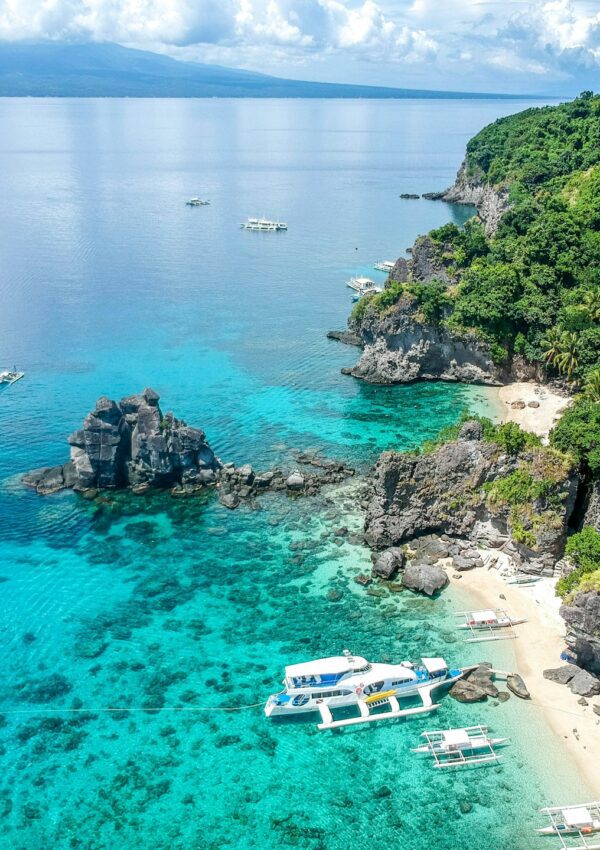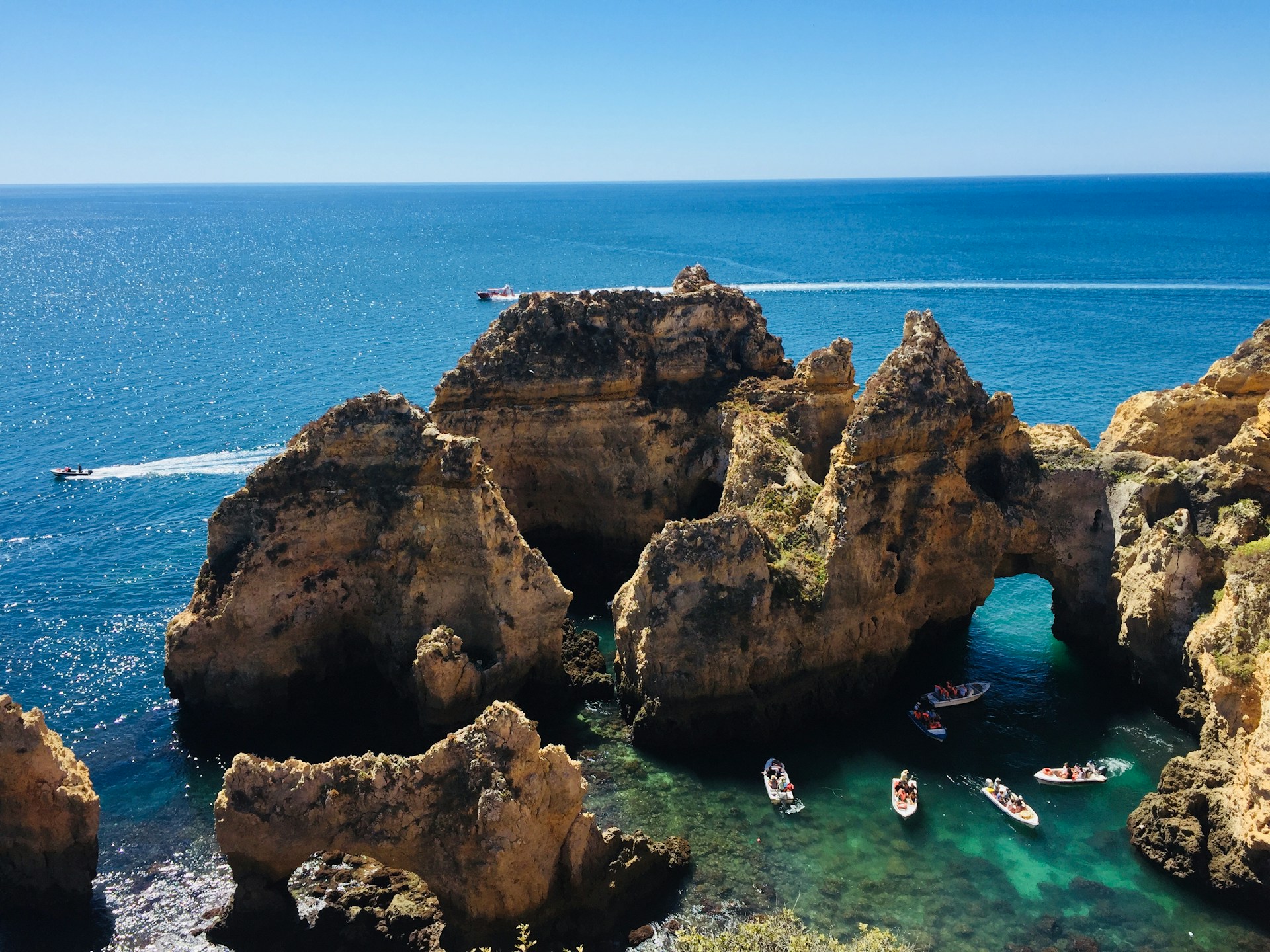
Indonesia is a rich tapestry of culture, history, and natural beauty in Southeast Asia.
From the ancient temples that exude pure energy to the vibrant jungles teeming with wildlife, this archipelago is a great place for both cultural explorers and nature lovers.
With its diverse religions, languages, and tropical landscapes, Indonesia offers a unique experience at every turn.
Whether you’re captivated by close encounters with playful monkeys at the Sacred Monkey Forest or in awe of the stunning white sand beaches and lush jungles, Indonesia remains one of the most exotic and fascinating travel destinations in the world.
Top Landmarks to Visit in Indonesia
- Top Landmarks to Visit in Central Java
- Top Landmarks to Visit in East Java
- Top Landmarks to Visit in Bali
- Top Landmarks to Visit in Lombok
- Top Landmarks to Visit in Sumatra
- Top Landmarks to Visit in Sulawesi
- Top Landmarks to Visit in West Papua
- Komodo Island
- Should You Book a Tour to Visit Indonesian Landmarks?
- Tips for Visiting Landmarks in Indonesia

Top Landmarks to Visit in Central Java
Borobudur Temple
Borobudur is the world’s largest Buddhist temple and a UNESCO World Heritage site.
Its stunning architecture features nine stacked platforms adorned with over 2,600 relief panels and 504 Buddha statues, offering breathtaking views from the top, especially at sunrise.
How to Get There: Located about 40 kilometers northwest of Yogyakarta, the temple is accessible by car, taxi, or public transportation. Many tour operators offer guided tours from Yogyakarta.
Cost: The entrance fee for international visitors is around $25 USD. Additional costs may apply for guided tours.
Tip: Arrive early for the sunrise tour to witness the magical view. Dress modestly, as it is a religious site, and be prepared for some climbing due to the many steps.
Prambanan Temple
Prambanan Temple is a magnificent Hindu temple complex featuring three main temples dedicated to the Trimurti: Brahma, Vishnu, and Shiva.
Known for its tall, pointed architecture and intricate carvings, the temple depicts stories from ancient Hindu texts like the Ramayana.
How to Get There: Located about 17 kilometers from Yogyakarta, Prambanan is accessible by car, taxi, or motorbike.
Public transportation options are also available.
Cost: The entrance fee for international visitors is around $25 USD.
Additional fees may apply for performances and guided tours.
Tip: Visit during sunset for stunning views and wear comfortable shoes, as you will be walking on uneven surfaces. Don’t miss the cultural performances, including the Ramayana ballet.
Mount Merapi
Mount Merapi is one of Indonesia’s most active volcanoes, standing at 2,930 meters (9,616 feet). Renowned for its hiking trails, it offers stunning views of the landscape and the surrounding region, making it popular among adventure seekers.
How to Get There: The starting point for the hike is usually from the village of Selo, about a 2-3 hour drive from Yogyakarta.
Visitors can hire a local guide or join a tour for safety and navigation.
Cost: While there is no formal entrance fee, hiring a local guide typically costs around $20-30 USD depending on the group size.
Tip: The best time to hike is during the dry season from April to October. Ensure you have proper hiking gear, as the trek can be challenging.
Local guides offer insights into the volcano’s history and cultural significance.
Lawang Sewu
Lawang Sewu, meaning “Thousand Doors,” is an iconic historical building located in Semarang, Central Java.
Built in the early 20th century, this stunning structure served as the headquarters for the Dutch East Indies railway company. Its architectural style features a mix of Art Deco and colonial influences, making it a significant landmark.
How to Get There: Lawang Sewu is easily accessible from Semarang city center, and you can reach it by car, motorbike, or public transportation.
Cost: There is typically a small entrance fee of around $1-2 USD.
Tip: The building’s expansive structure and historical significance make it popular for photography, especially during sunset when the lighting enhances its beauty.
Consider taking a guided tour to learn more about its fascinating history and the ghost stories associated with it.
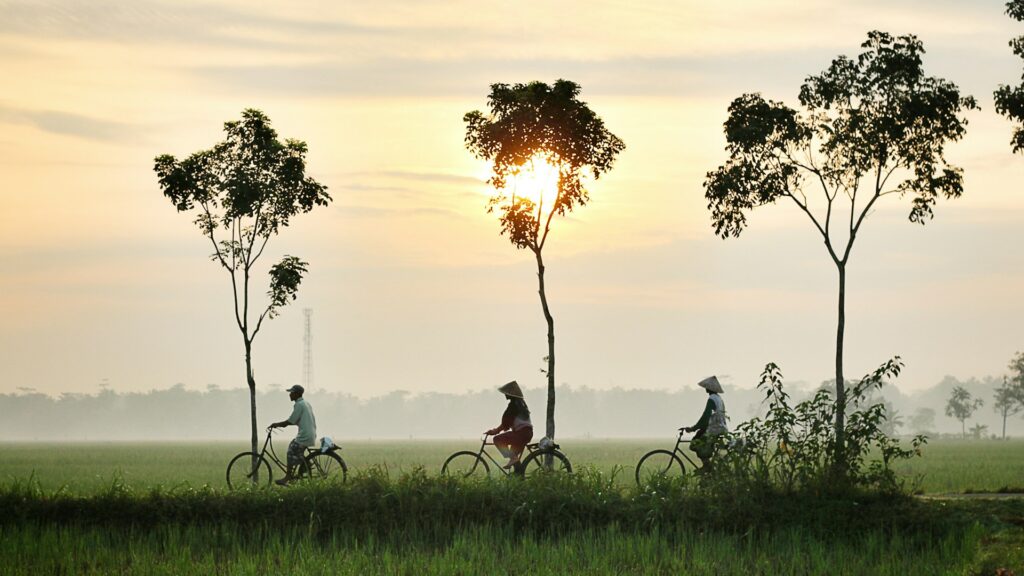
Top Landmarks to Visit in East Java
Mount Bromo
Mount Bromo is an iconic active volcano located within the Bromo Tengger Semeru National Park.
Known for its stunning sunrise views and otherworldly landscapes, it features a vast sea of volcanic sand and the striking Bromo crater.
How to Get There: Mount Bromo is accessible by car or motorbike from nearby towns like Malang or Probolinggo. Jeep tours are also popular for getting around the park.
Cost: The entrance fee for foreign visitors is approximately $22 USD. Additional costs may arise if you choose a guided tour.
Tip: To experience the breathtaking sunrise, arrive early and find a good viewing spot. Wear warm clothing, as it can be quite chilly in the early morning.
Ijen Crater
Ijen Crater is famous for its unique blue flames, created by ignited sulfuric gases, and its beautiful acidic crater lake.
The site is also known for its sulfur mining, where workers carry heavy loads of sulfur from the crater.
How to Get There: Ijen Crater is located about 37 kilometers from Banyuwangi.
You can reach it by car or bus to the base of the crater, where you will need to hike for about 1-2 hours to reach the summit.
Cost: The entrance fee for international visitors is around $10 USD.
Additional costs may apply for guided tours.
Tip: The best time to visit is during the night to catch the blue flames, followed by a sunrise view over the crater lake.
Bring a flashlight for the hike and consider wearing a mask due to sulfur fumes.
Tumpak Sewa Waterfall
Tumpak Sewa Waterfall is a breathtaking multi-tiered waterfall located in East Java, known for its stunning natural beauty and lush surrounding landscapes.
The waterfall cascades dramatically into a rocky gorge, creating a spectacular sight.
How to Get There: Tumpak Sewa is located near the village of Supiturang, about 30 kilometers from Malang.
You can reach it by car or motorbike, followed by a short hike to the waterfall.
Cost: There is usually a small entrance fee of around $1-2 USD, which helps maintain the area.
Tip: The best time to visit is during the rainy season (November to March) when the waterfall flows at its fullest.
Be prepared for a bit of hiking and bring your camera to capture the stunning views.
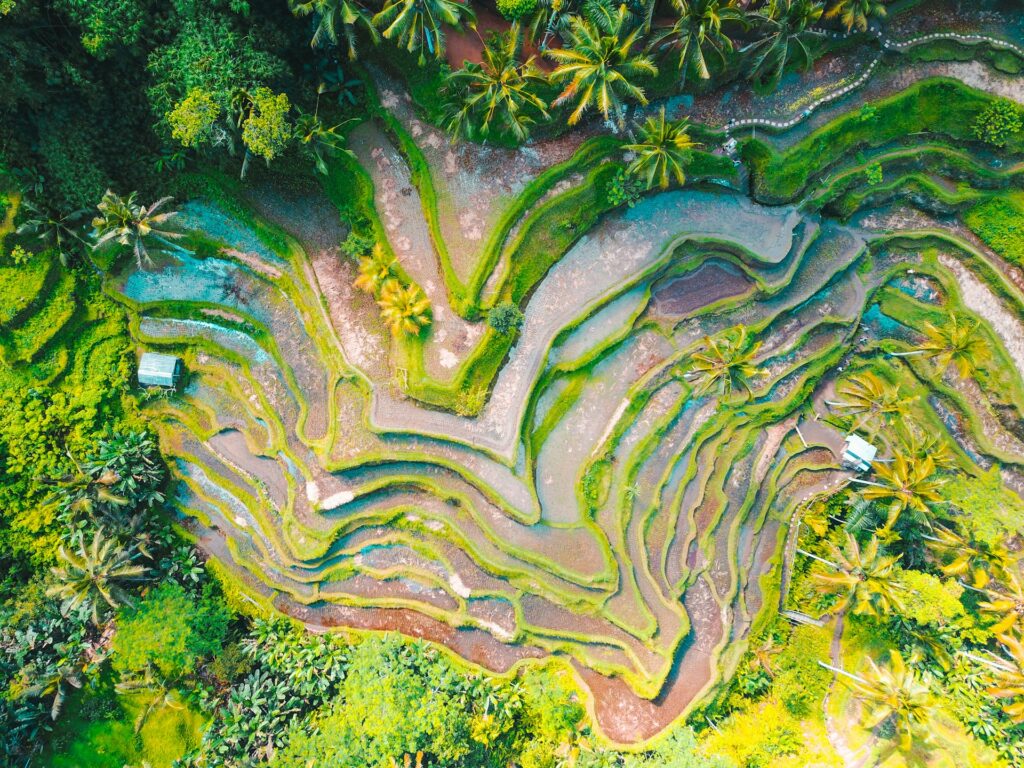
Top Landmarks to Visit in Bali
Tanah Lot Temple
Tanah Lot Temple is an iconic Indonesia landmark located on Bali’s west coast, renowned for its stunning ocean views and cultural significance in Balinese Hinduism.
The temple appears to float on the water during high tide, making it a breathtaking sight, especially at sunset.
How to Get There: Tanah Lot is approximately a 45-minute drive from popular areas like Canggu or Seminyak.
You can reach it by car or scooter.
Cost: The entrance fee typically ranges from $3 to $4 USD.
Tip: Visit during low tide to explore the area around the temple and take advantage of fantastic photo opportunities.
Arriving early can help you avoid the crowds, especially during sunset.
Uluwatu Temple
Uluwatu Temple is a stunning cliffside temple perched on a 70-meter-high cliff overlooking the Indian Ocean.
Known for its breathtaking views, it also hosts traditional Kecak dance performances during sunset, adding to its cultural experience.
How to Get There: Uluwatu Temple is located in the southern part of Bali and can be reached by car or scooter from areas like Kuta or Seminyak, typically taking around 30-45 minutes.
Cost: Entrance fees are around $2 USD, and there may be an additional fee for the Kecak dance performance.
Tip: Wear a sarong, which is provided at the entrance, and be cautious of the monkeys around the temple, as they are known for snatching belongings.
Arrive early to secure a good seat for the Kecak performance.
Tegalalang Rice Terrace
The Tegalalang Rice Terrace is famous for its stunning terraced rice fields that offer picturesque landscapes and a glimpse into traditional Balinese agriculture.
The site is a popular spot for photography and relaxation amidst the beautiful scenery.
How to Get There: Tegalalang is located about 10 kilometers north of Ubud, easily accessible by car or scooter.
It typically takes around 30 minutes to reach from Ubud.
Cost: There is no formal entrance fee, but visitors are encouraged to make a small donation to support local farmers.
Tip: Early mornings or late afternoons are the best times to visit for cooler temperatures and beautiful lighting for photos.
Take the opportunity to explore nearby cafes and shops that offer local crafts and refreshments.
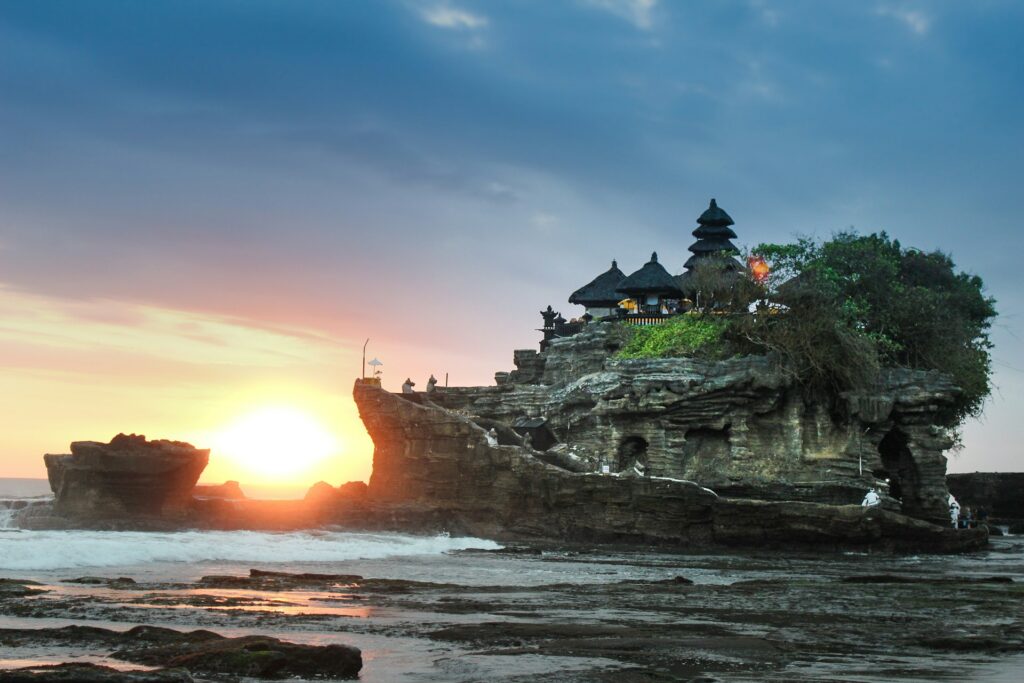
Top Landmarks to Visit in Lombok
Mount Rinjani
Mount Rinjani is Indonesia’s second-highest volcano, standing at 3,726 meters (12,224 feet).
It offers a challenging trek that rewards hikers with breathtaking views, especially from its summit and the stunning Segara Anak crater lake.
How to Get There: You can start your trek to Mount Rinjani from either Senaru or Sembalun villages.
Most treks take 2-3 days to complete and typically require a guide.
Cost: The entrance fee is around $10-15 USD, which supports conservation efforts.
Tip: The best time to hike is during the dry season from April to December.
Make sure to bring proper hiking gear and be prepared for changing weather conditions.
Mount Renapi
Mount Renapi is a stunning stratovolcano located in Central Java, known for its challenging hikes and scenic landscapes.
Standing at 2,389 meters (7,838 feet), it offers hikers the chance to explore lush greenery, unique rock formations, and a beautiful crater lake.
How to Get There: The trek usually starts from the village of Purbalingga.
While there’s no formal entrance fee, it’s recommended to hire a local guide for safety and navigation.
Cost: No formal entrance fee, but hiring a guide may incur additional costs.
Tip: Plan your visit during the dry season from April to October for the best trekking conditions.
Early morning hikes can lead to stunning sunrise views over the landscape.
Senggigi Beach
Senggigi Beach is a popular destination on Lombok’s west coast, known for its stunning sunsets, vibrant coral reefs, and excellent snorkeling opportunities.
The beach provides a perfect blend of relaxation and adventure.
How to Get There: Senggigi Beach is easily accessible by car or motorbike from Mataram, the capital of Lombok, which is about 20 kilometers away.
Cost: There is no entrance fee to access the beach, but you may want to budget for beach clubs or activities like snorkeling.
Tip: The best time to visit is during the dry season (April to October), especially for sunset views.
Explore nearby reefs for snorkeling, and enjoy the local dining options along the beach .
Gili Islands
The Gili Islands, comprising Gili Trawangan, Gili Meno, and Gili Air, are a tropical paradise located off the northwest coast of Lombok.
Known for their stunning beaches, crystal-clear waters, and vibrant marine life, the Gili Islands are a favorite destination for snorkeling, diving, and relaxation.
How to Get There: You can reach the Gili Islands by fast boat from Bali or Lombok, with multiple departures throughout the day.
The boat ride takes approximately 1-2 hours, depending on your departure point.
Cost: There are no entrance fees for the islands, but you should budget for transportation costs, boat tickets, and accommodation.
Tip: Each island offers a different vibe—Gili Trawangan is known for its lively nightlife, Gili Meno is more tranquil and perfect for relaxation, and Gili Air strikes a balance between the two.
Consider staying on one island and exploring the others via boat during your visit.
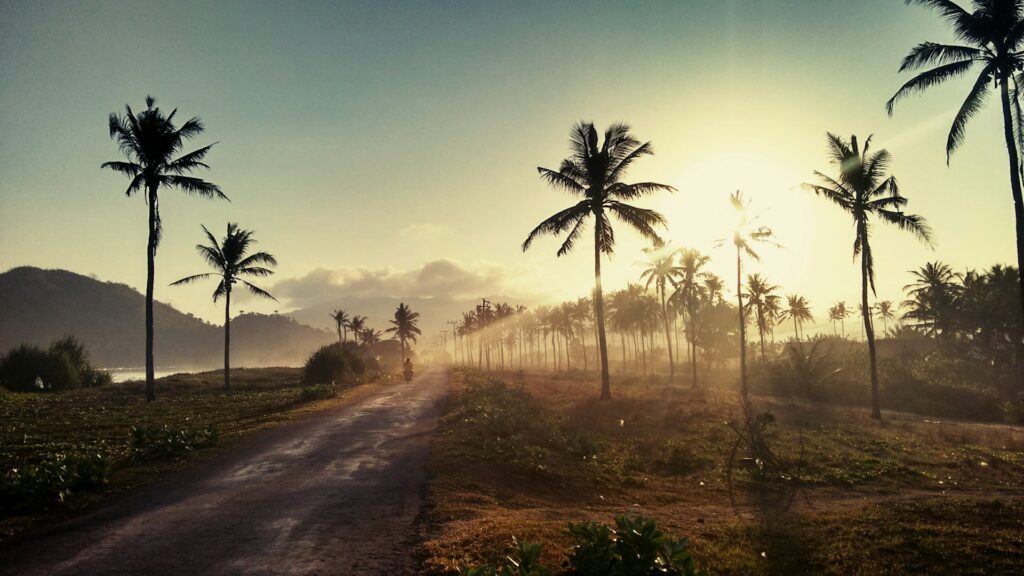
Top Landmarks to Visit in Sumatra
Lake Toba
Lake Toba is the largest volcanic lake in the world, renowned for its breathtaking views and unique Batak culture.
Crater lakes are formed by volcanic eruptions.
Lake Toba is the site of a massive supervolcanic eruption, known as the Toba eruption, which is considered one of the largest volcanic eruptions in the last 2 million years.
The lake is surrounded by picturesque hills and offers opportunities for swimming, fishing, and boating.
Don’t worry, Lake Toba has been inactive for about 74,000 years.
How to Get There: Lake Toba is accessible by flying into Medan and then taking a 4-5 hour drive or bus ride to Parapat, where ferries can take you to Samosir Island.
Cost: Entrance to the lake is free, but activities such as boat tours may incur costs.
Tip: Spend time on Samosir Island to immerse yourself in Batak culture and visit traditional villages.
Don’t miss the chance to try local cuisine, especially the delicious fish dishes.
Bukit Lawang
Bukit Lawang serves as a gateway to Gunung Leuser National Park, known for its rich biodiversity and the chance to see orangutans in their natural habitat.
The area features lush rainforest, rivers, and a vibrant ecosystem, making it a paradise for nature lovers.
How to Get There: Bukit Lawang is located about 90 kilometers from Medan.
You can reach it by car or bus, which takes about 3 hours.
Cost: There is usually a small entrance fee to the national park, which helps support conservation efforts.
Tip: For the best chance to see orangutans, consider joining a guided trekking tour.
Early morning treks often yield the best wildlife sightings and be prepared for varying trail conditions.
Kerinci Seblat National Park
Kerinci Seblat National Park is known for its rich biodiversity and the stunning Kerinci volcano, which is the highest peak in Sumatra.
The park is home to various wildlife, including the endangered Sumatran tiger and orangutans, making it a vital conservation area.
How to Get There: The park is located in the heart of Sumatra and can be reached from various cities, including Padang and Jambi, by car or bus.
The main entrance is in the town of Kersik Tuo.
Cost: Entrance fees vary depending on the area you wish to visit, generally around $10-15 USD for international visitors.
Tip: For those interested in trekking, plan multi-day hikes to experience the park’s stunning landscapes fully.
Local guides are recommended to navigate the trails and spot wildlife effectively.
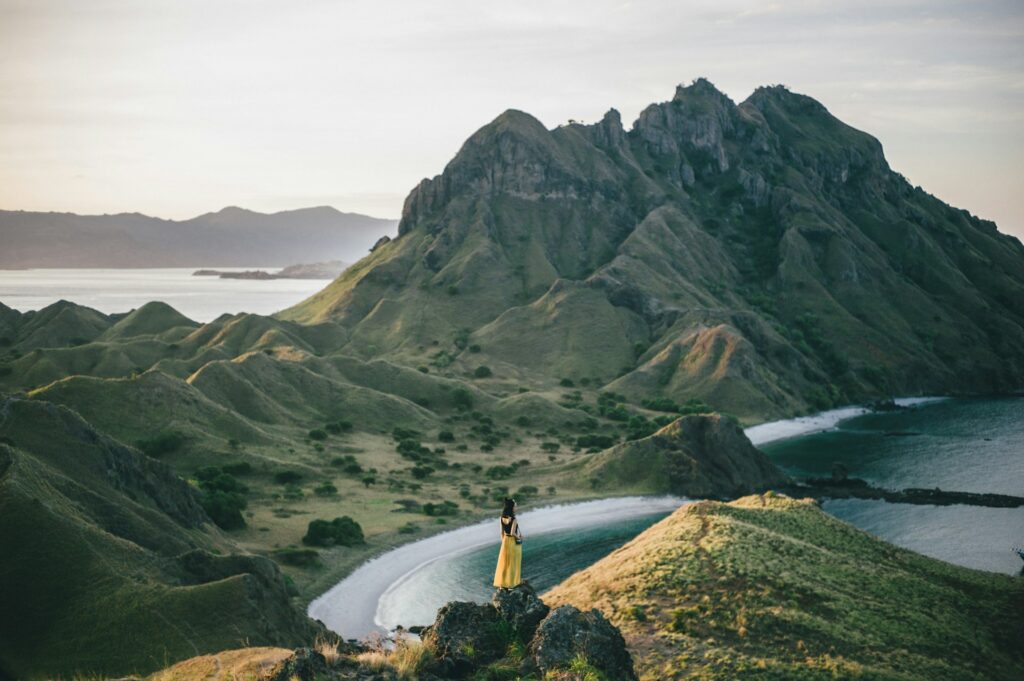
Top Landmarks to Visit in Sulawesi
Tana Toraja Region
Tana Toraja is a highland region in South Sulawesi, famous for its unique culture, elaborate funeral traditions, and stunning architecture.
The small village is known for its distinctive boat-shaped houses and impressive rice terraces, set against a backdrop of breathtaking mountainous landscapes.
How to Get There: To reach Tana Toraja, fly into Makassar, the capital of South Sulawesi, and then take a bus or car for an 8-10 hour journey.
Cost: While there’s no formal entrance fee, some ceremonies may request small donations.
Tip: The best time to visit is during the Toraja Festival season, typically in July or August, to witness traditional ceremonies and celebrations.
Be sure to respect local customs, especially when visiting burial sites.
Bunaken Marine Park
Bunaken Marine Park is renowned for its incredible underwater biodiversity, making it a top destination for divers and snorkelers.
The park boasts vibrant coral reefs, a variety of marine life, and stunning underwater landscapes, including steep walls and drop-offs.
How to Get There: Bunaken is accessible by boat from Manado, the capital of North Sulawesi, which has direct flights from major Indonesian cities.
Cost: There is an entrance fee of approximately $10-15 USD for visitors, and additional costs for diving or snorkeling activities.
Tip: The best time to visit is during the dry season from May to September when the visibility for diving is optimal.
Don’t forget to bring your own gear if possible, or rent locally to support the community.
Lore Lindu National Park
Lore Lindu National Park offers a unique mix of cultural heritage and rich biodiversity, with various trekking routes that wind through its diverse ecosystems.
The park is home to rare species, ancient megaliths, and indigenous communities, providing visitors with a chance to experience both nature and local culture.
How to Get There: Lore Lindu is located about 60 kilometers from Palu, the capital of Central Sulawesi.
You can reach the park by car or bus from Palu, followed by a short trek to various points of interest.
Cost: The entrance fee is typically around $1-2 USD, which helps maintain park facilities.
Tip: Trekking in the park is best done with a guide to navigate the trails and learn about the flora, fauna, and local cultures.
Consider visiting during the dry season (April to October) for the best trekking conditions.
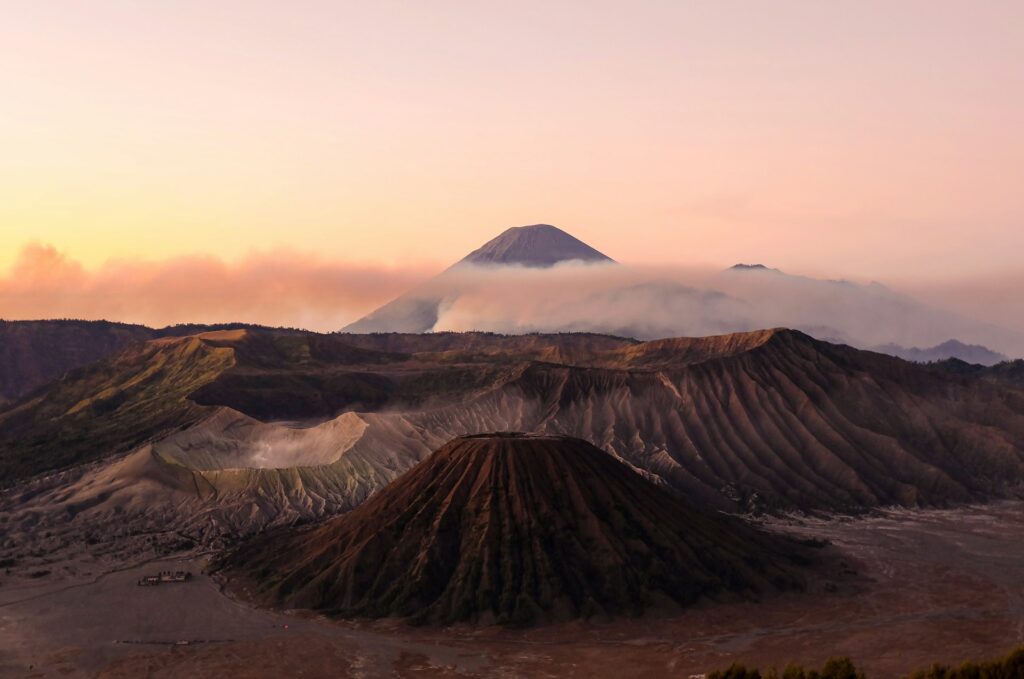
Top Landmarks to Visit in West Papua
Raja Ampat Islands
The Raja Ampat Islands are renowned for their breathtaking marine biodiversity and stunning natural landscapes.
This tropical paradise is home to some of the richest coral reef ecosystems in the world, attracting divers and nature enthusiasts from all over.
How to Get There: To reach Raja Ampat, fly to Sorong from major Indonesian cities like Jakarta or Bali.
From Sorong, take a ferry or speedboat to the islands, with various accommodations available on different islands.
Cost: An environmental fee of about $100 USD is required for visitors, which helps preserve this pristine area. Additional costs may apply for diving or snorkeling activities.
Tip: The best time to visit is between October and April when the weather is more favorable for diving and snorkeling.
Consider booking a liveaboard tour for an immersive experience exploring multiple dive sites.
Cenderawasih Bay National Park
Cenderawasih Bay National Park is famous for its exceptional marine life, including the world’s largest fish, the whale shark.
This national park offers stunning underwater experiences, lush landscapes, and opportunities for bird watching, particularly for the rare bird of paradise.
How to Get There: The park is accessible via boat from the coastal town of Nabire or Manokwari.
Guided tours are recommended for easier navigation and the best experiences.
Cost: Entrance fees are generally around $10-15 USD, and additional costs may apply for guided tours or activities like diving and snorkeling.
Tip: The best time to see whale sharks is during the dry season from April to November.
Bring your snorkeling gear and be ready for incredible underwater adventures.
Manokwari
Manokwari, the capital of West Papua, is known for its beautiful beaches and unique flora and fauna.
The area offers a mix of cultural experiences and natural beauty, making it a great starting point for exploring the region.
How to Get There: Manokwari is accessible by flights from major Indonesian cities.
The airport is located just outside the city center, making it easy to reach accommodations and attractions.
Cost: There are no specific entrance fees to explore the city and its beaches, but some activities may have associated costs.
Tip: Explore the local culture and history by visiting nearby traditional villages.
Don’t miss the opportunity to enjoy fresh seafood at local restaurants, and take some time to relax on the scenic beaches.
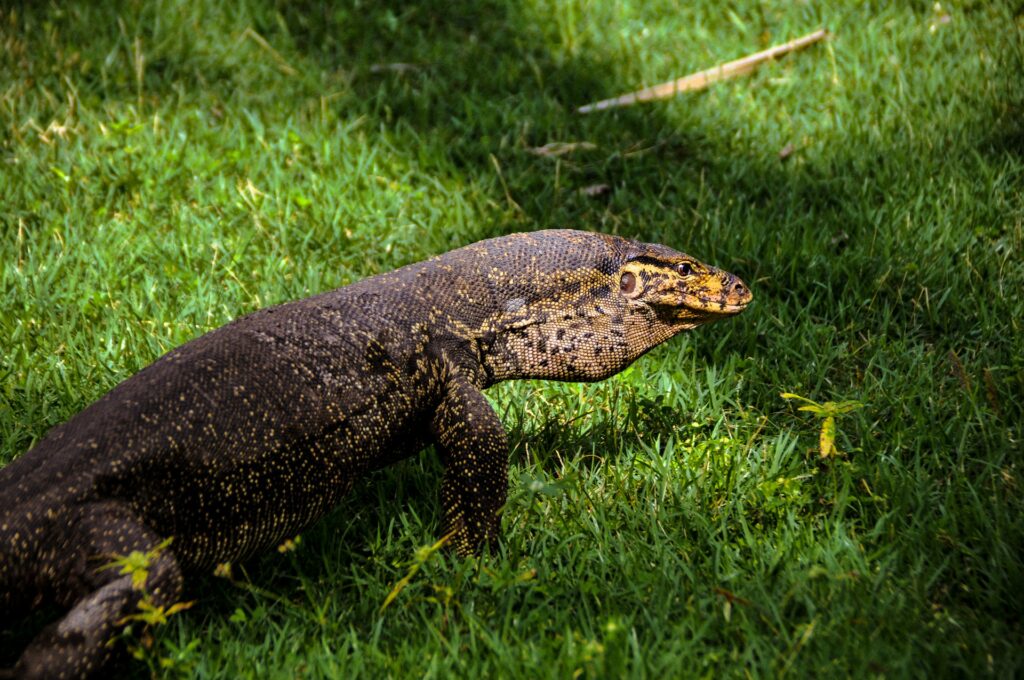
Komodo Island
Komodo Island, part of the Komodo National Park, is famous for being home to the Komodo dragon, the world’s largest lizard.
This UNESCO World Heritage site features stunning landscapes, pristine beaches, and diverse marine life, making it a popular destination for nature lovers and adventure seekers.
How to Get There: To reach Komodo Island, fly to Labuan Bajo from Bali or other major Indonesian cities.
From Labuan Bajo, take a boat to Komodo Island.
There are various tour operators offering day trips and multi-day packages that include snorkeling, diving, and guided treks to see the Komodo dragons.
Cost: The entrance fee for Komodo National Park is approximately $10-15 USD, with additional costs for specific activities like diving or trekking.
Tip: The best time to visit is from April to December when the weather is dry.
Be sure to follow safety guidelines when encountering Komodo dragons and consider booking a guided tour to enhance your experience and ensure your safety.

Should You Book a Tour to Visit Indonesian Landmarks?
For certain landmarks in Indonesia, booking a tour can really enhance your experience.
Places like Komodo National Park and Mount Bromo are best explored with a guide who can help you navigate the logistics, provide local insights, and ensure your safety, especially for activities like trekking or wildlife spotting.
A tour guide can also make the visit more meaningful by sharing the history and cultural significance of each site.
If you’re looking for a hassle-free experience, platforms like GetYourGuide offer a variety of tours, or you can support local operators for a more personalized touch.
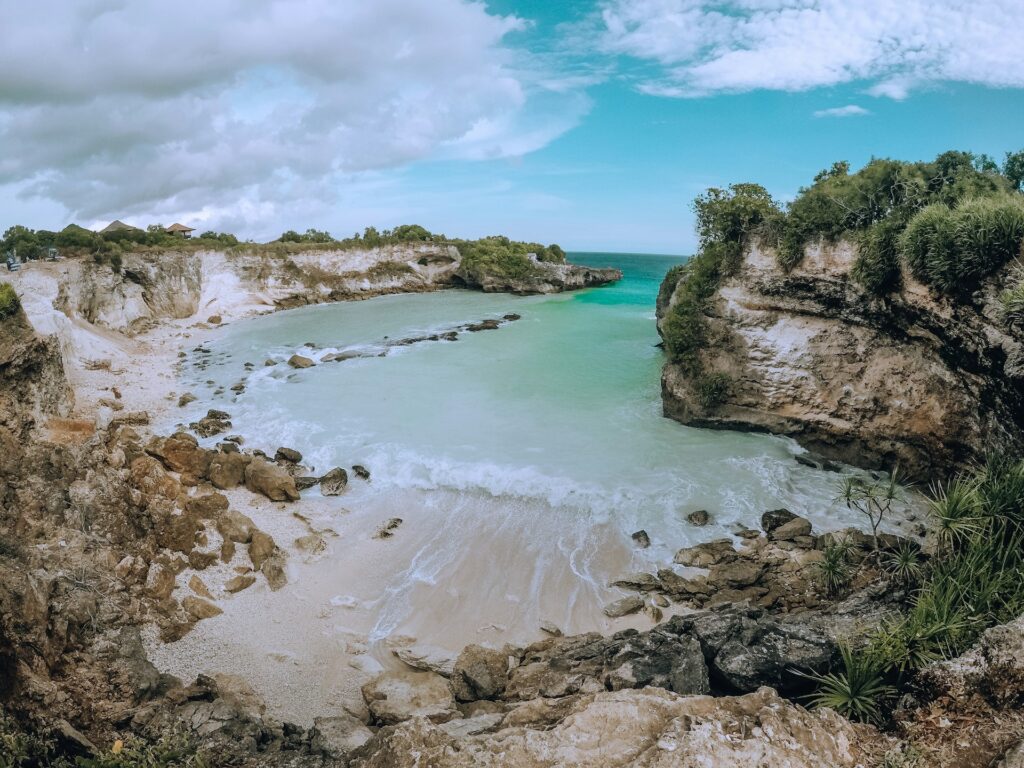
Tips for Visiting Landmarks in Indonesia
When visiting Indonesia’s landmarks, timing is key. The early morning is often the best time to go, not only to avoid the crowds but also to beat the heat, especially at places like Borobudur or Mount Bromo.
Be sure to pack comfortable shoes, sunscreen, plenty of water, and a hat if you’re heading to outdoor locations.
For religious sites like Uluwatu Temple or Prambanan, dress modestly and bring a sarong if needed.
Always be mindful of local customs, respect sacred spaces, and ask permission if you’re unsure about taking photos.
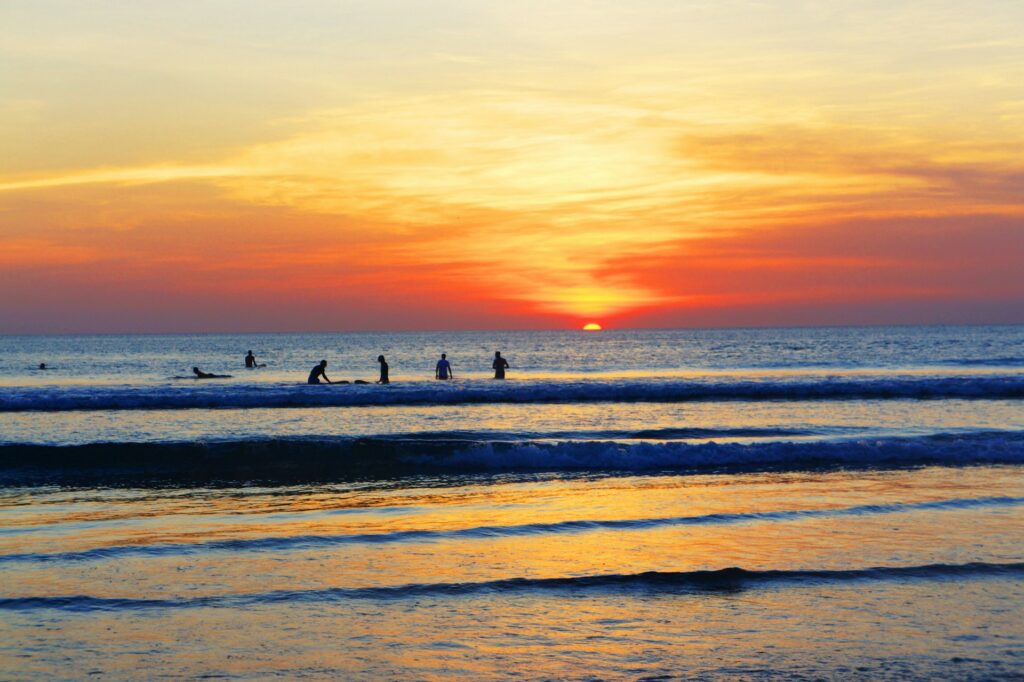
FAQ
What is the famous landmark in Indonesia?
One of the most famous landmarks in Indonesia is Borobudur Temple, the largest Buddhist temple in the world, located in Central Java.
Its massive stone structure and detailed carvings attract visitors from around the globe.
What is the most popular spot in Indonesia?
Bali is the most popular destination in Indonesia, known for its beautiful beaches, vibrant culture, and iconic landmarks like Uluwatu Temple and Tanah Lot Temple.
What is the oldest landmark in Indonesia?
Borobudur Temple, built in the 9th century, is one of the oldest and most significant landmarks in Indonesia, representing a rich history of Buddhism.
What is a famous landmark in Jakarta?
The National Monument (Monas) is Jakarta’s most famous landmark.
It symbolizes the country’s fight for independence and stands as a prominent feature in the city’s skyline.
What is Indonesia most famous for?
Indonesia is most famous for its vast array of tropical islands, rich cultural diversity, and stunning natural landscapes, including volcanoes, rainforests, and beaches.
Why is Indonesia a tourist attraction?
Indonesia’s unique mix of natural beauty, historical landmarks, and diverse cultures makes it a top tourist destination.
Visitors are drawn to its beautiful islands, temples, volcanoes, and opportunities for diving, trekking, and cultural experiences.
What is Indonesia’s oldest city?
Palembang, in Sumatra, is considered one of the oldest cities in Indonesia, dating back to the 7th century as a major center of the Srivijaya Empire.


